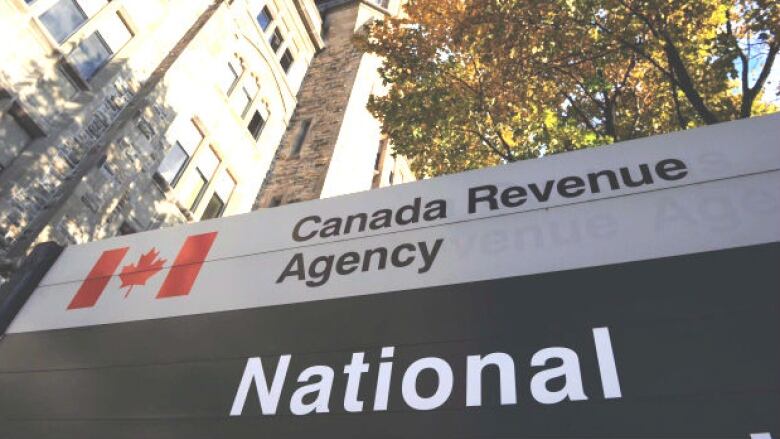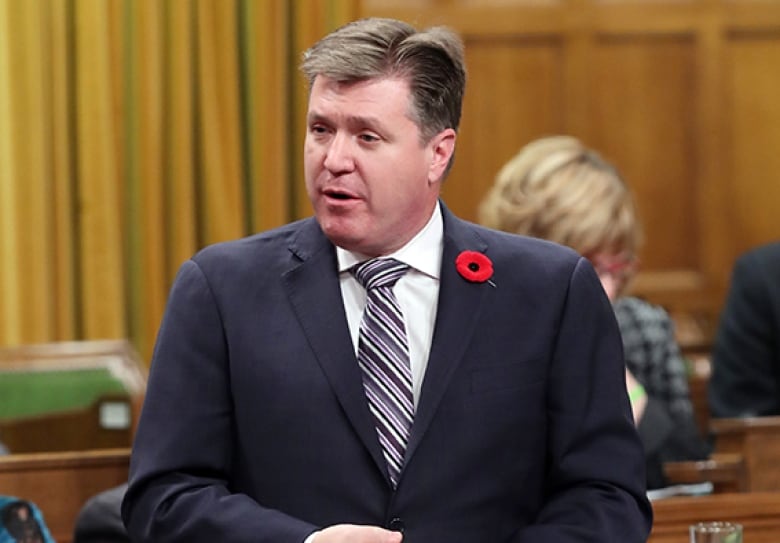Top CRA executives pocket up to $35,000 a year in performance pay
Critics say big performance paycheques aren't justified

Top executives at the Canada Revenue Agency have been taking home performance pay of up to $35,000 a year on top of their six-figure salaries over the past three years, government figures show.
That puts those executives' compensationat a higher percentage of their potential performance pay than the compensation earned by many of their fellow executives at the tax agency. In 2015/16, for example, those at the EX-4 and EX-5 levelsreceived on average 75.9 per cent of the maximum performance pay they could be awarded, compared with 59.8 per cent on average for those in the EX-1 to EX-3 levels.
Critics question why senior executives received that much, given the performance of the CRA over the last few years.
"I think most Canadians would be concerned if executives at the CRA received significant performance pay given the number of serious problems at the agency," said Conservative MP Pat Kelly.
Under the rules that govern performance pay for CRA executives, those in the two top tiersEX-4 and EX-5 who perform well are eligible for "at risk" pay of up to 26 per cent of their salaries. Base salaries for those at the EX-4 and EX-5 levels range from $152,800 to $202,500 a year.
Depending on the exact size of the paycheque, that means each person at the EX-4 or EX-5 level would be eligible for maximum performance pay of between $39,936 and $52,650.
In 2015/16, EX-4s and EX-5s at CRA who received performance pay got an average of $35,000. That's 76 per cent of the average maximum amount of $46,078 they couldreceive if they were judged to have demonstratedtop job performances.
In 2014/15, they took home on average $29,982, or 65 per cent of the average maximum, and in 2016/17 they received $29,253, or 63.5 per cent of the average maximum.
That was a higher percentage of their potential performance pay than the sums earned by their colleagues in the lower executive categories.
Executives in the EX-1 to EX-3 categories are eligible for potential at-risk pay of up to 15 per cent of their salaries, or a maximum average performance pay of between $16,035 and $23,625.
2014/15 was the best year for the executives in levels EX-1 to EX-3. Those who received performance pay took home an average of $12,364 62.6 per cent of their average potential maximum.
The next year, however, they only got an average of $11,824, or 59.8 per cent of their potential maximum. That same year, the top two tiers of executives got 75.9 per cent of their maximum.
In 2016/17, the EX-1 to EX-3 executives received an average $12,104, or 61.2 per cent of their potential maximum.
Overall, the agency spent $6.8 million in 2015/16 and $6.9 million in 2016/17 on performance pay for CRA executives.
It alsospent $5 million on performance pay for managers in 2015/16 and $4 million in 2016/17.
In 2015/16, only 2 per cent of executives failed to receive any performance pay, dropping to 1 per cent in 2016/17.
- Bonuses, performance pay for government executives rose in Trudeau's 1st year
- Canadians getting bad advice from the taxman, when they can get through: auditor
There were between 27 and 34 people in the EX-4 and EX-5 categories from 2014 and 2017, and between 488 and 515 in the EX-1 to EX-3 categories.
Performance pay based on evaluations
Like many corporations, the federal government offers a system of performance pay designed to attract top talent into the public service.
Those who perform to the level expected get "at risk" paya term that reflects the fact that executives and deputy ministers risk not receiving it if their performance falls short of satisfactory.
When it comes to doling out performance pay, executives and deputy ministers are evaluated on how successful they have been in running their departments and in implementing objectives set by the government.
Executives in other government departments earn the same base salary as those at the CRA. Those at the EX-4 and EX-5 level are eligible for maximum "at risk" pay of 20 per cent of their salaries, plus potential bonuses of up to six per cent of their base pay.
Those at the EX-1 to EX-3 level can earn up to 12 per cent of their salaries in performance pay and up to three per cent in potential bonuses.
A breakdown of performance pay by executive level for the rest of the public service was not available, making it difficult to know how performance pay for top executives in other departments compares with the CRA.
New Democratic Party revenue critic Pierre-Luc Dusseault questions whether such large performance paycheques are justified, given the problems at CRA in recent years.
"When you're a regular Canadian and you have difficulty just to call someone at the CRA, you have difficulty accessing a service, and you see those executives giving themselves performance pay, it's upsetting and it's frustrating for people looking at that situation," he said.

The agency defends the performance pay, saying officials only get it if they show results.
"Executives do not earn performance pay if they do not meet performance expectations," wrote spokesperson Karl Lavoie. "The assessment of these expectations must consider both what results were achieved as well as how they were achieved based on the Key Leadership Competencies outlined by the Treasury Board secretariat and rated accordingly."
Lavoie said executives are assessed according to government-wide priorities such as fostering healthier workplaces and diversity as well as the agency's priorities.
But critics question why the CRA's top executives are getting so much in performance pay when the agency is under fire for its performance.
For example, they cite a damning auditor general's report that found the agency couldn't handle high call volumes, often didn't answer the phone and gave taxpayers incorrect information almost 30 per cent of the time.
"Many Canadians have found there were many problems with the CRA, many problems getting services from the CRA and now we see those executives (getting) money for their performance when Canadians don't think the performance was good in the last two years,"Dusseaultsaid.
Dusseault also called into question the CRA's performance when it comes to taking action on offshore tax evasion in the wake of the Panama Papers, the Paradise Papers and other leaks of offshore tax account information.
"When we look at other tax agencies around the world, they are much better at going after tax cheats."
- $500M recouped worldwide from tax cheats due to Panama Papers but none of it in Canada
- 'Tax haven' Canada being used by offshore cheats, Panama Papers show
Kelly questioned the level of performance pay for top executives, particularly given recent attempts to deny some Canadians the disability tax credit and the attempt to tax employee benefits.

Kelly said National Revenue Minister Diane Lebouthillier said the CRA was on track to recover nearly $25 billion in unpaid taxes only to have the CRA admit it wasn't going to be able to collect a lot of that money.
"I think many Canadians are concerned about the performance of the Canada Revenue Agency," he said.
Dusseault and Kelly both said the executive performance pay at CRA should be examined.
Elizabeth Thompson can be reached at elizabeth.thompson@cbc.ca
Corrections
- This story has been rewritten from an earlier version to remove a comparison between top executives at the CRA and executives in other government departments because the levels being compared were not equivalent. The story has also been updated with a new quote from Conservative MP Pat Kelly as a result.Feb 08, 2018 2:26 PM ET












_(720p).jpg)


 OFFICIAL HD MUSIC VIDEO.jpg)
.jpg)



























































































